
Search Wild Foods Home Garden & Nature's Restaurant Websites:
Rubus genus: (Blackberry, Black Raspberry, Dewberry & Red Raspberry)
Contents Of This Page:
- Blackberry
- Black Raspberry
- Cloudberry
- Dewberry Group
- Northern Dewberry or Common Dewberry
- Upland Dewberry
- Red Raspberry
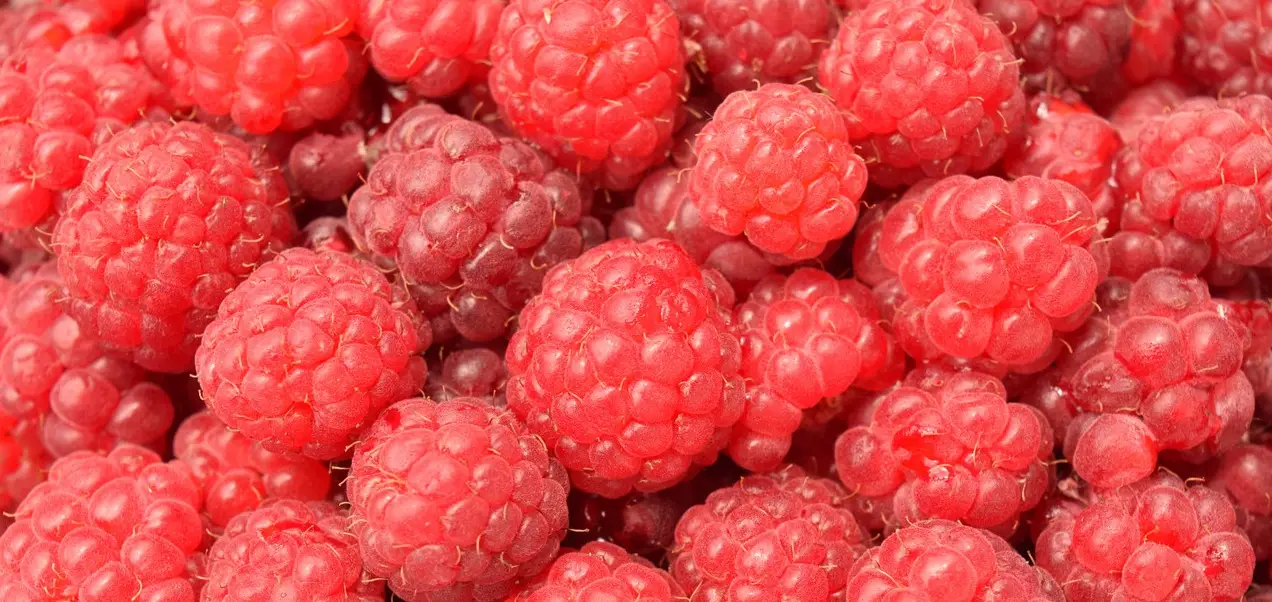
(NOTE: If you are not interested in growing any of the Rubus genus, but just finding the fruit and using it, try going to the Nature's Restaurant Online site Rubus page.)
The bushes in this genus have thorns, as they are part of the Rose (Rosaceae) family.
So how do you distinguish between a Blackberry and a Black Raspberry or other Raspberries? Simple. When you pick the ripe fruit of a Blackberry, the center (torus) stays with the fruit, whereas when you pick any kind of Raspberry, the center (torus) stays with the bush, and you get the hollow fruit only.
Any one of these can be a great choice to grow at home if you live where they can grow. There is some work to them, but not too much, and the effort does pay off well. Choose which ones by your preference mixed with what will grow best in your local area conditions. Either speak to knowledgeable local nursery staff and buy from there, or transplant whatever grows wild and healthy in the same conditions around you. One thing, don't plant these where there has been tomatoes, potatoes, eggplants, or peppers growing in the last couple of years. Regardless of what I say below, if you buy from a nursery, follow their advice, as each of the varieties can have different requirements.
Transplanting: There are many varieties of each kind that you can buy from nurseries, and on-line. Many would say it is a big mistake to transplant from the local fields or woods edges as the plants can have diseases. They may be right in some cases or areas, but my experience has been that well tended canes that have adapted to the local conditions do very well - and the ones that are growing around where you live have been the ones that survived in that area. However, I only have done this with Red Raspberries, so what I say specifically applies to them, though I suspect it would work for the others. This is a book on growing wild plants in your home garden, and that is what I do. Over the years, I've tried growing a lot of different plants and variations of those plants in the gardens I've had, and as I said in the introduction, I've come to find the best results and least worry comes from local plants that are well adapted to the area. Right now, I have a yard that has soil that is clay based, and stays wet every spring - sometimes for a couple of weeks. If you told a nursery that's what you had, they would probably say your chances of growing any of these brambles is slim, yet Red Raspberries appeared on their own in my yard. By just doing a little tending of them, I have fruit to eat from them each year, and can only guess these plants are local variants that have adapted to clay.
Soil & Site: You should have a full sun spot to grow any of these, though the Blackberries can handle a little shade time. The ideal range for soil acidity is pH of 5.6 to 6.2, except for the Cloudberry, as it likes very acidic soil. In my personal experience, the Red Raspberry can do fine with more alkaline soils, up to neutral (7.0). You can, and probably should test the soil to find out if it is in the correct range and adjust before going through the work of planting them. That said, if you find they are growing in the wild all around you, it is a reasonable guess the soil is OK. Any of these plants ideally want well drained, sandy loam soil. If the pH is too high (alkaline), dig in conifer needles and/or conifer sawdust, or use an acidifying fertilizer when feeding your canes. You can buy sulphur based powders from nurseries or garden supply stores to mix in the soil to make it more acidic as well. Don't overdo it though. If the soil is too acidic, add lime or fireplace ash to the soil and mix in well when preparing. If the soil was too acidic, and you live where there are conifer trees all around, don't use the needles as mulch if you have other choices. If conifer needles are your only source of organic matter however, make sure you add your fireplace ash or lime to the same place you put the conifer needles where growing the Rubus canes. The ash is very alkaline, and will balance out the acidifying aspect of the conifer needles. Ash is stronger than lime so use less for the same job.
Prepare the soil by turning in some composted manure or fertilizer or plant/leaf compost. If you have very sandy, dry soil I would also suggest adding peat moss or a lot of compost. Make rows that are spaced well apart. Most recommendations state more, but if your space is tight, you can get away with 1 meter (3 feet) wide rows with 1 meter (3 feet) between row edges. I would not go any closer than that between rows - take that as a minimum. 2 meters (6 feet) would be ideal if you have the space. If your space is very limited, just put in one row as long as you have the space for.
Planting: When planting Red Raspberries, just put them in the row 60 cm (2 feet) apart. They will spread to fill those gaps in time. Blackberries don't spread out like Raspberries, so put them in little hills in the rows 1 meter (3 feet) apart. If you have the space, give them a little more room between hills. Plant them the recommended depth by the nursery you buy them from, or the depth you found them in the wild. Plant in the spring after the chance of frost is over where you live. Keep them watered well until established and growing. Follow the instructions given to you by the nursery for cutting them back after planting, but if you get them from the wild, cut them back after planting or before transplanting in the spring to about 15 cm (6 inches) high. If you are transplanting wild Red Raspberries in the late fall, don't do any cutting back until the spring, and mulch well before the frost comes.
Maintenance: I suggest putting in a V trellis or a T trellis system for Red Raspberries, and a stake for Blackberries and Dewberries with one or two wires between to tie the canes too.
To prune, in the early spring before the buds open, prune out all the canes that fruited last season. It is easy to tell which ones they are, as they have the greyish bark on them. Prune out any, at any time during the growing season, that look sick or show signs of a mould or disease and put those cut out canes in the garbage - not in the compost pile. When you have pruned right, you should have no more than about 15 canes per meter (3 feet) of row. Tie those you can to the wire.
Each spring, put some well composted manure or 10-10-10 fertilizer at the rate of about 1/2 kg (1 pound) per 5 meters (16 feet) of row. If you do the fertilizer, best to split the amount in half and do one feeding in the spring when the buds open, and about a month later. By the way, don't fertilize if you are having a drought - wait until there has been sufficient rain. Keep a couple of inches of mulch over the ground to keep weeds down and prevent the ground from drying out too fast. If you have to weed, do it by hand as it is easy to damage the roots of these plants. It is considered ideal that these plants get about 5 cm (2 inches) of rain per week. You can water if you don't get that, or if you live in an area where there is normally less, keep a thicker mulch over the ground where they grow. Expect a lower yield if the plants spend a lot of time dry.
Harvesting: Not much to say about this, pick when ripe. Before they become ripe, you may want to put bird nets over these if birds are stealing too many. I always have birds taking some, but find there is enough for me. The bird nets are available at garden stores, nurseries and some country hardware stores.
Using: Fresh, frozen and made into jams and used in baked goods. Check out the recipes in the links below the description. My favorite way to use them is to go out during the day and eat my fill right off the brambles. The taste is the best this way, and there is little work.
Blackberry
There are literally dozens of different kinds of Blackberry. The ones you should grow depend on where you live. As stated above, either buy from a local nursery or transplant specimens that are growing locally to your garden. That way, you have matched you local climate and soil types to Blackberry bramble type.
- USDA Plant Hardiness Zone: 5-10 (not all cultivars have the same range - check for your particular Blackberry). Trailing types need warmer zones. (More information on hardiness zones).
- Soil pH: depending on variety, 4.5-7.0 - check for the type you have.
- Plant Size: Normally up to 2 meters (6 feet), although can reach 3 meters (10 feet) occasionally
- Duration: Perennial root bush that replaces older Biennial canes (branches) from the ground with new ones creating a long lived bush
- Leaf Shape: On first year canes (primocane), there is a Palmate Compound leaf with 5-7 leaflets. On second year canes (floricane) the leaves have 3-5 leaflets. Each leaflet is Ovate
- Leaf Phyllotaxis (Arrangement) on branch: Alternate
- Leaf Margin: Serrated (saw toothed edge)
- Leaf Notes: Veins on leaf underside are raised above leaf surface creating recessed leaf channels on the upper side
- Flowers: 2-3 cm (4/5 to 1 1/5 inches) five petalled white or pale pink flowers with yellow center on racemes
- Fruit: Aggregate fruit, dark purple to black when fully ripe, center of fruit comes off stem and stays with fruit when picked.
- Bark: Covered in prickles
- Habitat: Adaptable to a large variety of conditions, and hence is all over North America, tends to quickly colonize disturbed and abandoned areas. Along fence lines, edges of woods, waste land, poor soils.
Web Resources:
- Recipe search on the web here (Google search) and here (Bing search).
- Pictures on the web here (Google images) and here (Bing images).
- Interactive USDA distribution map and plant profile here.
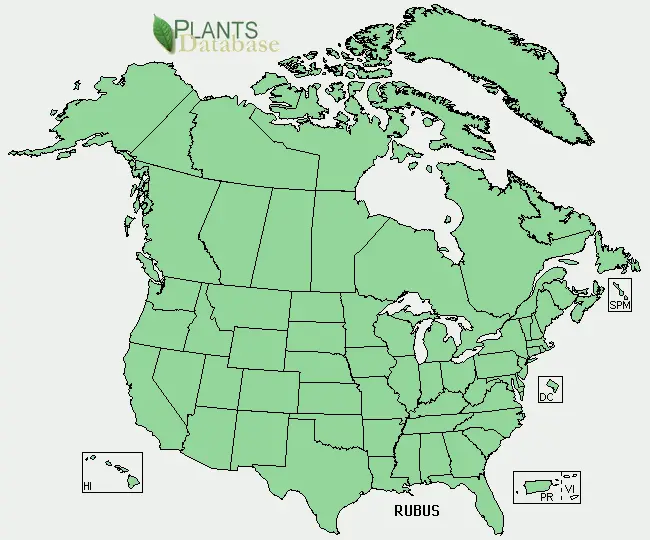
range. Distribution map courtesy of U. S. Department of Agriculture (USDA Natural Resources Service) and used in accordance with their policies.
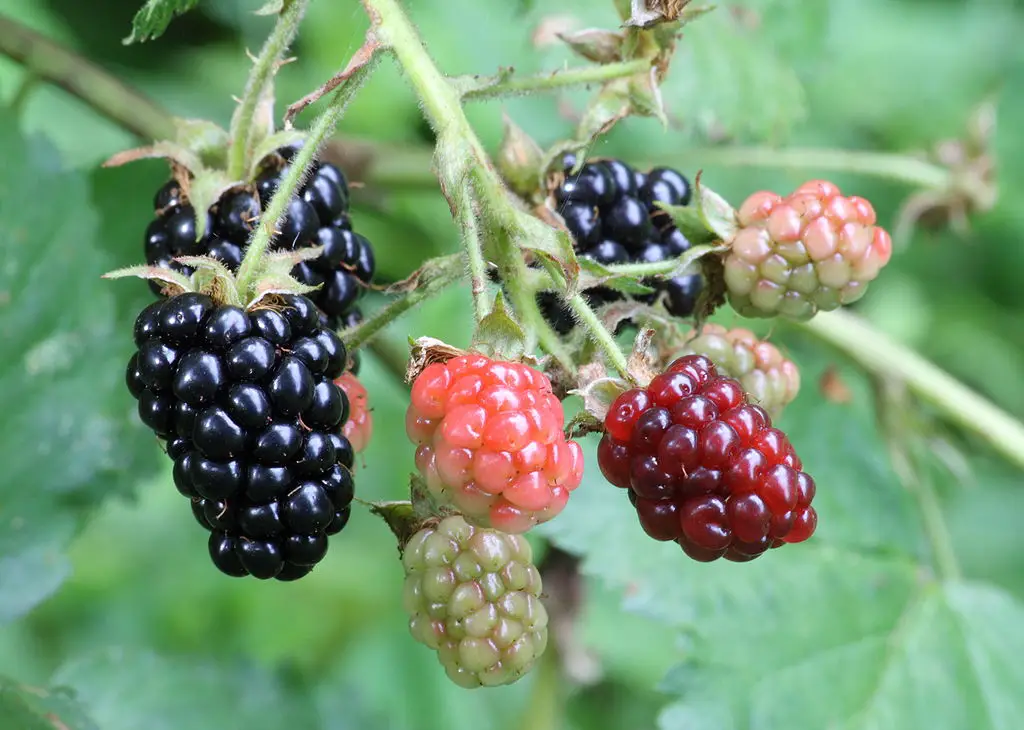
Blackberries at different stages of ripeness. (By: Ragesoss Attribution-Share Alike 2.5 Generic)
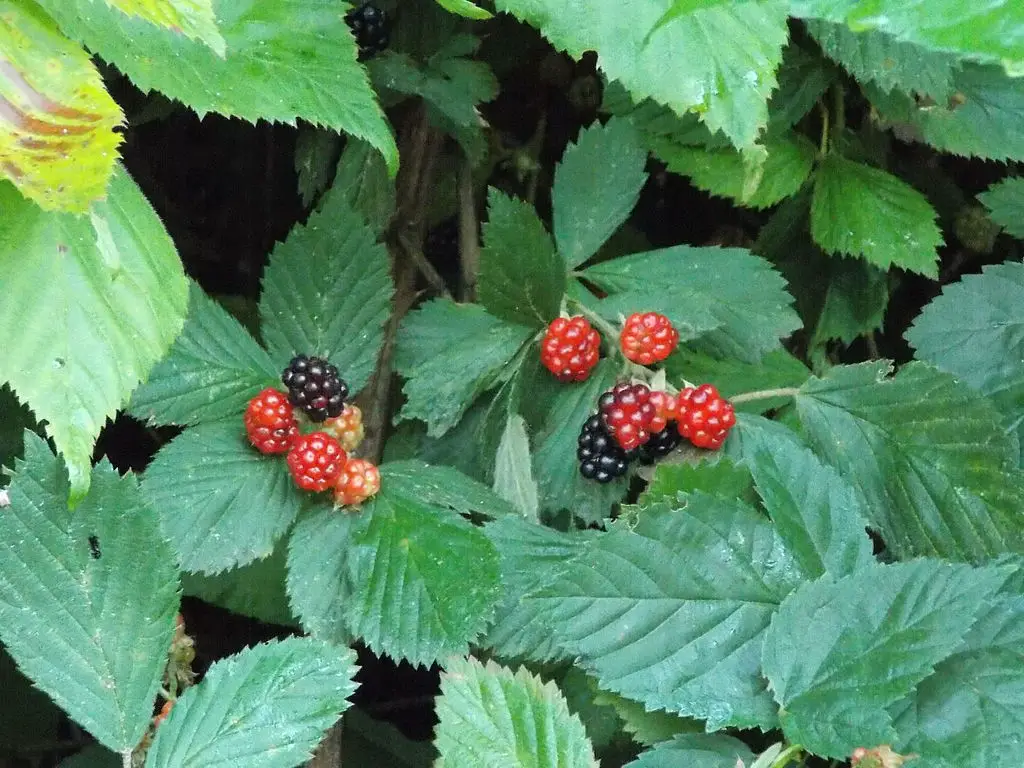
Blackberry leaves and fruit. (By: Caballero1967 Attribution-Share Alike 4.0 International license)
Black Raspberry
Black Raspberry: (Rubus occidentalis). Can be also known as Black Caps, Black Cap Raspberry, Scotch Cap, Thimbleberry, Wild Black Raspberry. If you find what looks like a Red Raspberry, and it is hard, it probably is just an unripe Black Raspberry. Just remember: A green, Black Raspberry is red.
- USDA Plant Hardiness Zone: 4-9 (More information on hardiness zones).
- Soil pH: 5.0-7.0
- Plant Size: Generally, up to 2 meters (6 feet) tall
- Duration: Perennial root system Shrub that replaces Biennial canes (branches) creating a long lived, spreading bush
- Leaf Shape: trifoliate leaf (sometimes 5 leaflets - Palmate Compound). Each leaflet is more-or-less Ovate
- Leaf Phyllotaxis (Arrangement) on branch: Alternate
- Leaf Size: 7.5 cm (3 inches) long, 5 cm (2 inches) wide
- Leaf Margin: Double Serrated (saw toothed edge)
- Leaf Notes: Underside of leaf looks lighter in color due to white hairs covering underside. Top of leaf has obvious indented channels where the veins are
- Flowers: Five petalled off white in clusters
- Fruit: Dark purple to black Aggregate fruit, though there are some yellow cultivars, about 8-9 mm (1/3 inch) diameter
- Bark: Young first year canes are green, turning a light reddish brown by second year, covered in prickles
- Habitat: Partial sun, moist, rich, well drained soil. Too much shade or not enough moisture will result in low yield of fruit.
Web Resources:
- Recipe search on the web here (Google search) and here (Bing search).
- Pictures on the web here (Google images) and here (Bing images).
- Interactive USDA distribution map and plant profile here.

Black Raspberry: (Rubus occidentalis) range. Distribution map courtesy of U. S. Department of Agriculture (USDA Natural Resources Service) and used in accordance with their policies.
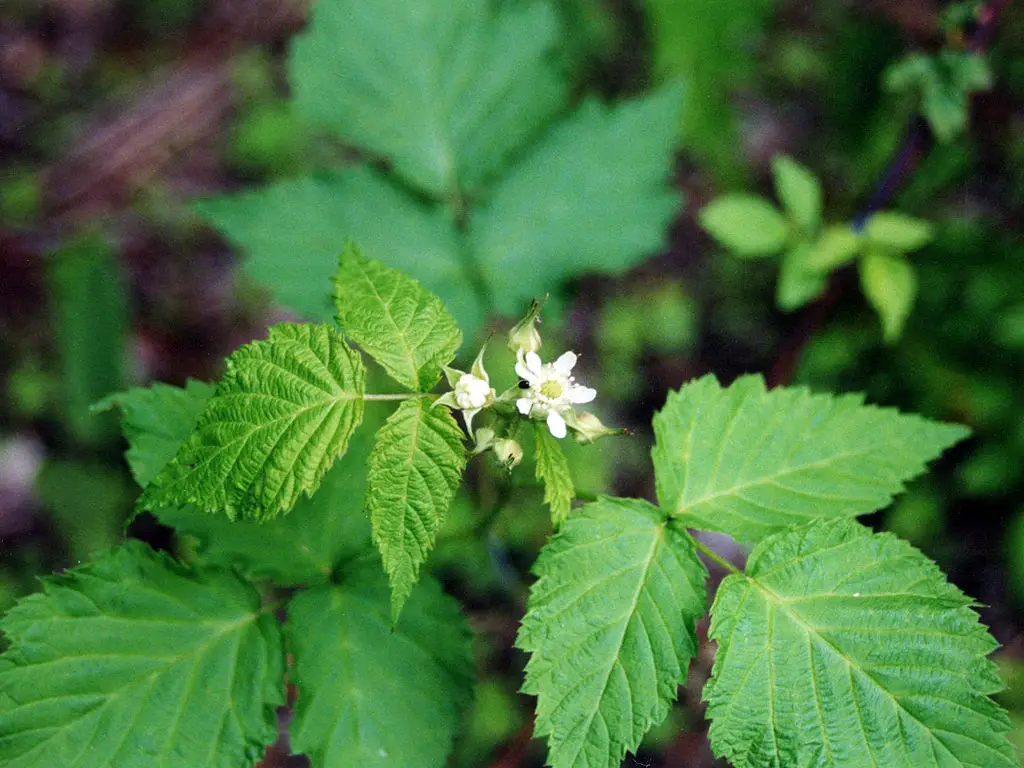
Black Raspberry: (Rubus occidentalis) leaves and flowers. (By: Jennifer Anderson @ USDA-NRCS PLANTS Database)
Black Raspberry: (Rubus occidentalis) ripe (forground) and unripe berries. (By: Alina Zienowicz Ala z CC BY-SA 3.0)
Black Raspberry: (Rubus occidentalis) canes in winter. (By: User:SB_Johnny GNU Free Documentation License, Version 1.2)
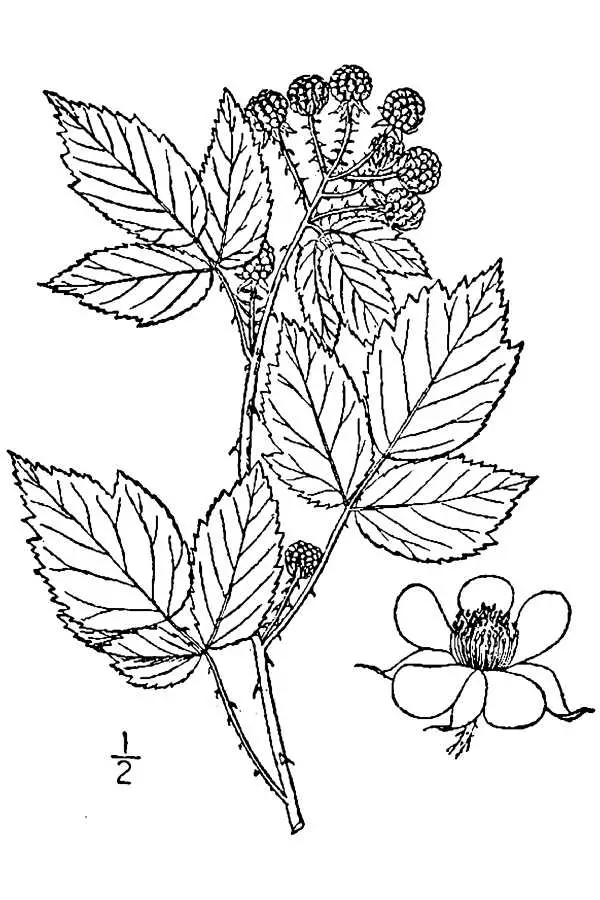
Black Raspberry: (Rubus occidentalis) drawing. (USDA-NRCS PLANTS Database / Britton, N.L., and A. Brown. 1913. An illustrated flora of the northern United States, Canada and the British Possessions. 3 vols. Charles Scribner's Sons, New York. Vol. 2: 277.)
Cloudberry
Cloudberry (Rubus chamaemorus). Also known as the Knotberry and Bakeapple. I don't know a lot about these personally - they don't seem to grow where I've lived. For the most part, they live in northern regions.
They produce fruit that looks like a light tangerine-orange to gold-yellow colored version of the Raspberry.
They grow 10–25 cm (4-10 inches) tall and you will only find them in wet, high acid soils. If you live where there are soil conditions like that, look for them. I lived in Central Ontario for years just South-East of Algonquin park, but never found them even though there were lots of spots in this area that had the right conditions.
- USDA Plant Hardiness Zone: 2-9 (More information on hardiness zones).
- Soil pH: 3.5-4.5
- Plant Size: 10–25 cm (4 to 10 inches) high
- Duration: Perennial
- Leaf Shape: Simple, Maple leaf like with 5-7 lobes
- Leaf Phyllotaxis (Arrangement) on branch: Alternate
- Leaf Size: 3-7 cm (1 1/5 to 2 3/4 inches) wide
- Leaf Margin: Serrated (saw toothed edge)
- Leaf Notes: Leaves are wrinkled, with sunken veins (from top of leaf) and slightly funnel shaped overall - not a flat leaf
- Flowers: White 5 petalled flower with yellow center.
- Fruit: Raspberry like amber Aggregate fruit ripe in early autumn
- Habitat: Wet, acidic soil in full sun, generally found in cold northern areas
Web Resources:
- Recipe search on the web here (Google search) and here (Bing search).
- Pictures on the web here (Google images) and here (Bing images).
- Interactive USDA distribution map and plant profile here.
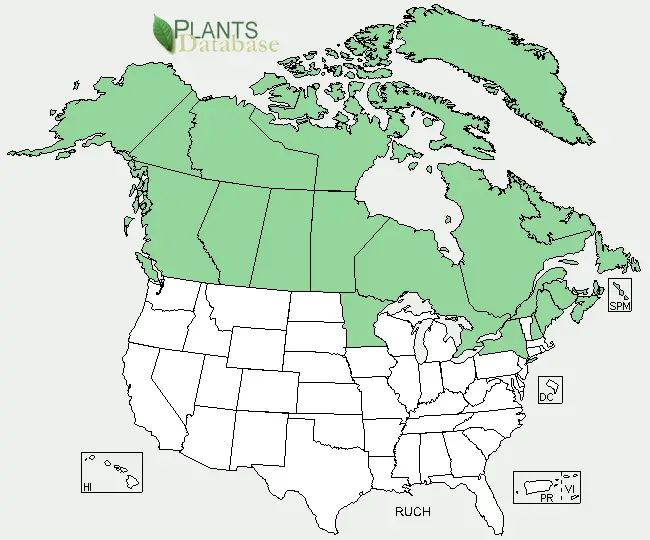
Cloudberry (Rubus chamaemorus) range. Distribution map courtesy of U. S. Department of Agriculture (USDA Natural Resources Service) and used in accordance with their policies.
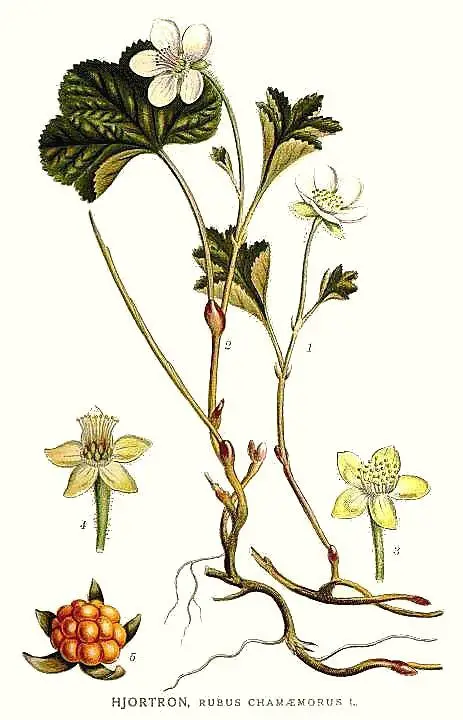
Cloudberry (Rubus chamaemorus) illustration. (By: Bilder ur Nordens Flora)
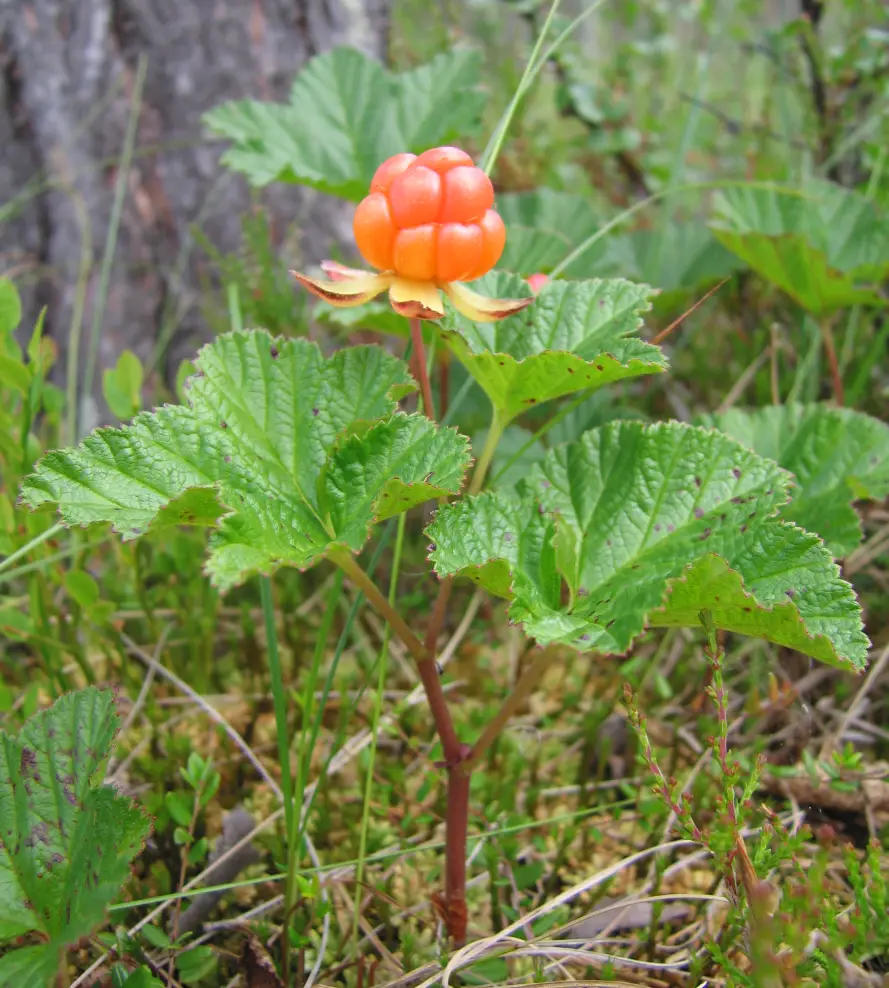
Cloudberry (Rubus chamaemorus) leaves and cloudberry ready to pick. (By: Primordial~commonswiki GNU Free Documentation License, Version 1.2)
Cloudberry (Rubus chamaemorus) leaves in fall colors. (By: Arnstein Rønning CC BY-SA 3.0)
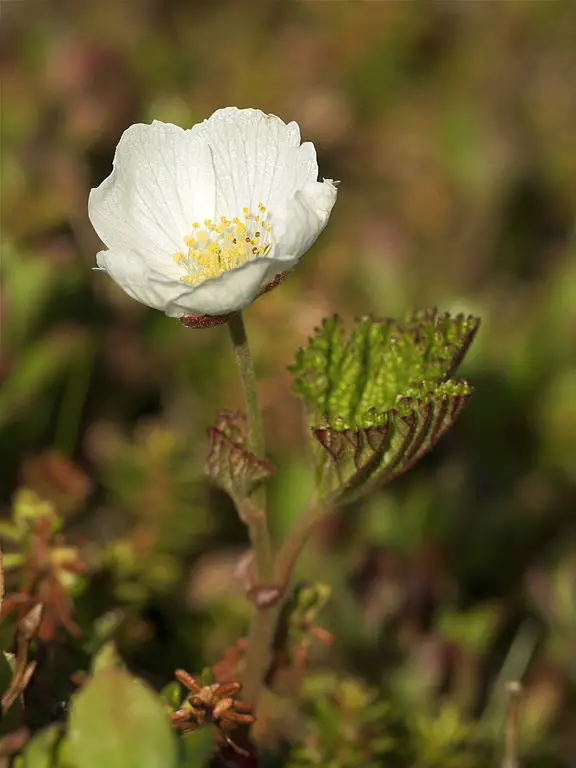
Cloudberry (Rubus chamaemorus) in flower. (By: Jörg Hempel Attribution 2.0 Generic)
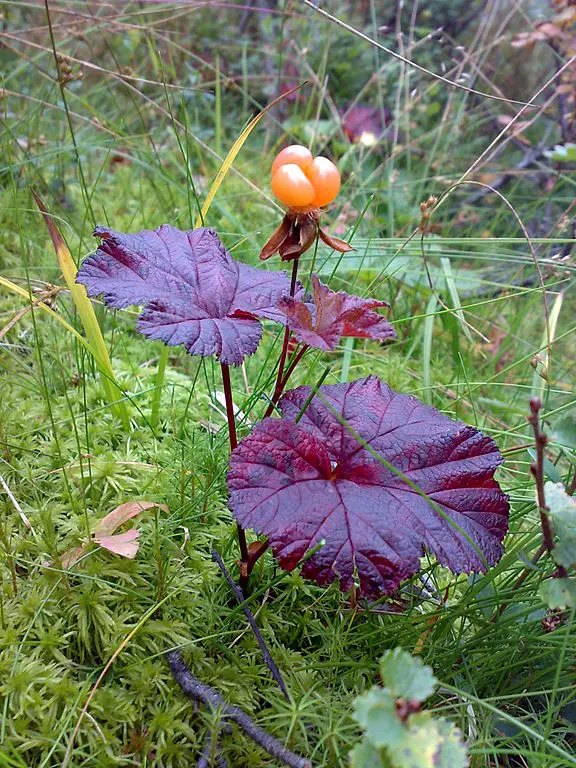
Cloudberry (Rubus chamaemorus) in September at high altitude location. (By: Bjoertvedt CC BY-SA 3.0)
Dewberry Group
Dewberry Group. There are a few in this group, but the only one that I know of in my area that is good enough to eat is the Northern Dewberry or Common Dewberry. A Dewberry is very similar to a Blackberry, but instead of growing on upright canes, it is a trailing plant - that is, it grows like a vine horizontally over the ground.
Northern Dewberry or Common Dewberry
Northern Dewberry or Common Dewberry (Rubus flagellaris).
- USDA Plant Hardiness Zone: 3-8 (More information on hardiness zones).
- Soil pH: 5.0-7.0
- Plant Size: Horizontally growing stems can grow as long as 4-5 meters (13-16 feet)
- Duration: Perennial
- Leaf Shape: Compound leaf with either 3 or 5 leaflets - most often is 3. Terminal leaf is on end of leaf stem, while other 2 or 4 leaves come from same spot on the stem which is about 2/3 of the way from where the leaf stem meets the branch. Each leaflet is Ovate
- Leaf Phyllotaxis (Arrangement) on branch: Alternate
- Leaf Size: Compound leaf up to 13 cm (5 inches) long, 13 cm (5 inches) wide
- Leaf Margin: Serrated (saw toothed edge)
- Leaf Notes: Underside of leaves are lighter green than the upper side, on the upper side of the leaf, the area between the veins is raised
- Flowers: Five petalled white flower about 2.5 cm (1 inch) diameter, flowers close at night
- Fruit: Dark purple to black when ripe, but red when unripe. 12-25 mm (1/2 to 1 inch) diameter. Ripe in later June.
- Bark: Young stems are green with white colored prickles, older stems are brown, woody with harder prickles
- Habitat: Very wide range of environments, moist well drained loose soils, does well after a forest fire. Seems to show up most often in grassy type areas that are between woods and roads for instance.
Web Resources:
- Recipe search on the web here (Google search) and here (Bing search).
- Pictures on the web here (Google images) and here (Bing images).
- Interactive USDA distribution map and plant profile here.
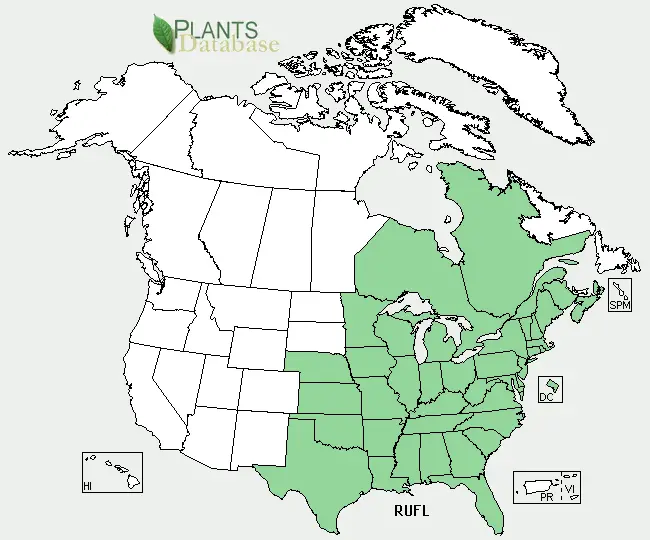
Northern Dewberry or Common Dewberry (Rubus flagellaris) range. Distribution map courtesy of U. S. Department of Agriculture (USDA Natural Resources Service) and used in accordance with their policies.
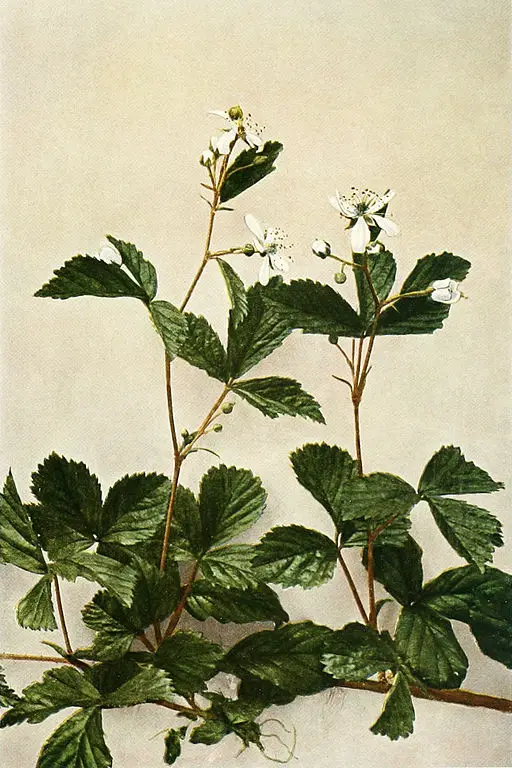
Northern Dewberry or Common Dewberry (Rubus flagellaris) plant in flower. (By: Wild Flowers of New York Part 1, Plate 93-B. Page 331. University of the State of New York, State Museum, Albany - Homer D. House, New York State Botanist. Walter B. Starr of the Matthews-Northrup Company, Buffalo, and Harold H. Snyder of the Zeese-Wilkinson Company, New York, photographers.)
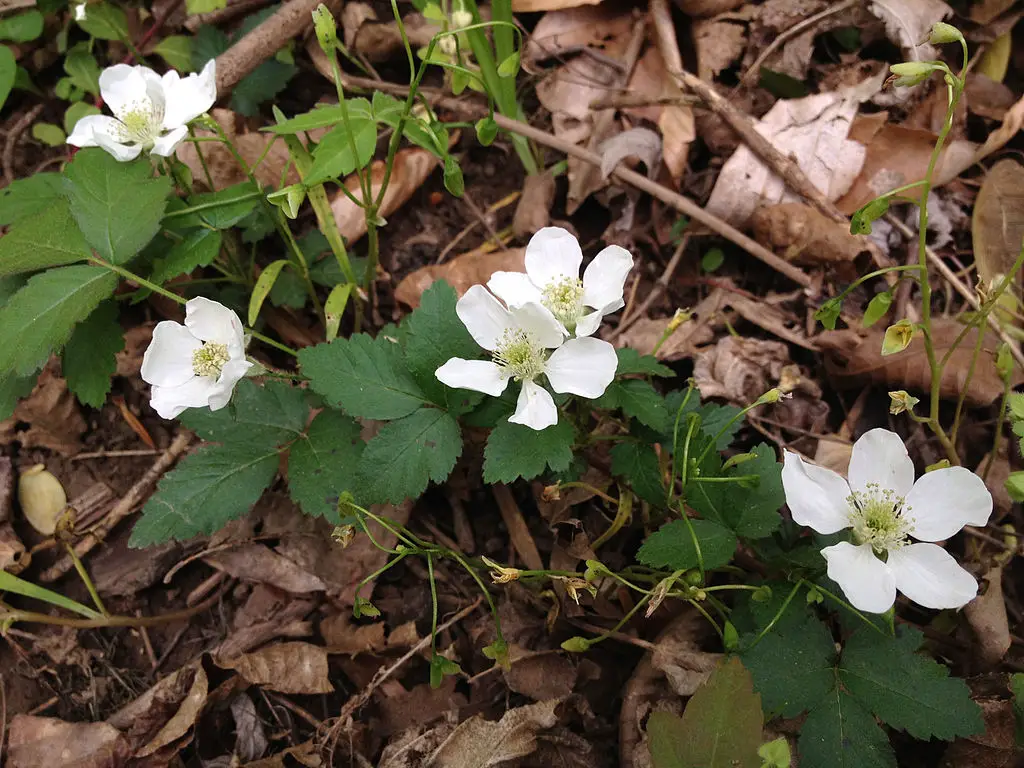
Northern Dewberry or Common Dewberry (Rubus flagellaris) in flower. (By: Fritzflohrreynolds CC BY-SA 3.0)
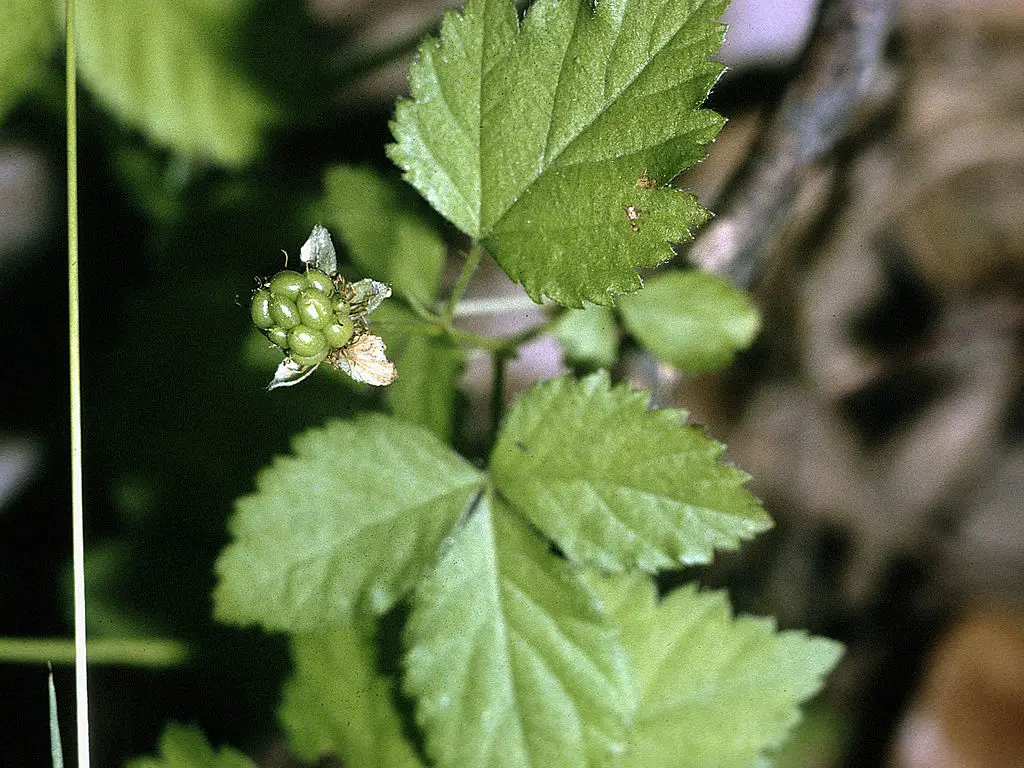
Northern Dewberry or Common Dewberry (Rubus flagellaris) leaves and immature fruit. (By: Robert H. Mohlenbrock @ USDA-NRCS PLANTS Database / USDA NRCS. 1995. Northeast wetland flora: Field office guide to plant species. Northeast National Technical Center, Chester.)
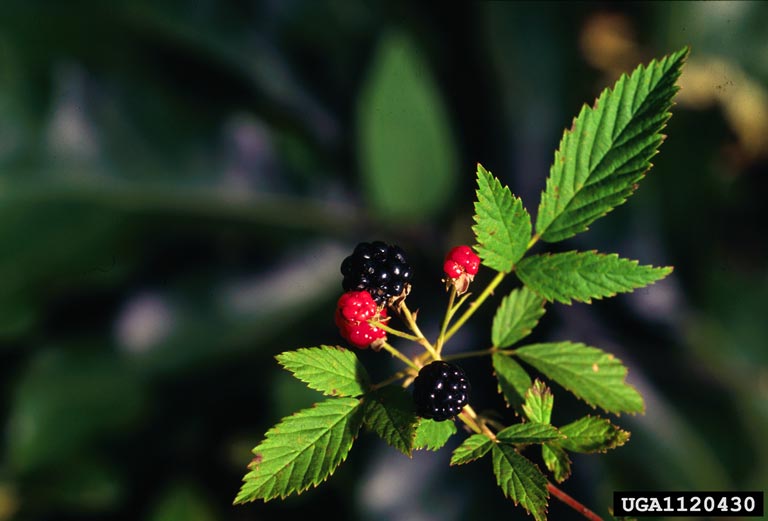
Northern Dewberry or Common Dewberry (Rubus flagellaris) with ripe drupe (berry). (By: James H. Miller & Ted Bodner - CC BY-SA 3.0)
Upland Dewberry
There is also the Upland Dewberry (Rubus invisus) in the Eastern USA, but I have never had any experience with it.
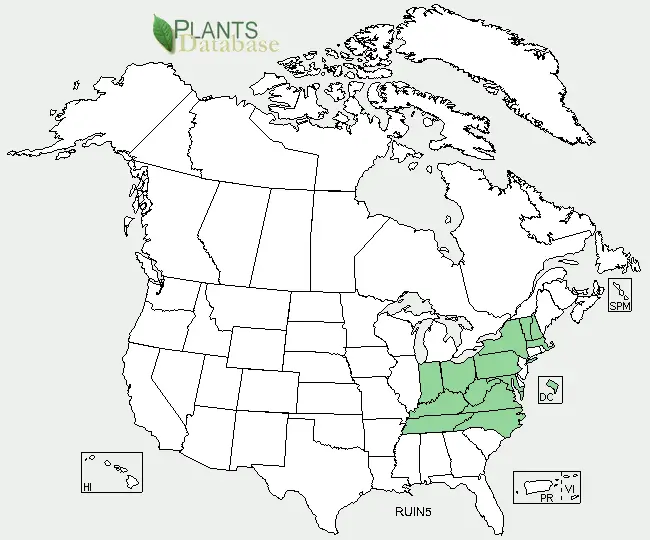
Upland Dewberry (Rubus invisus) range. Distribution map courtesy of U. S. Department of Agriculture (USDA Natural Resources Service) and used in accordance with their policies.
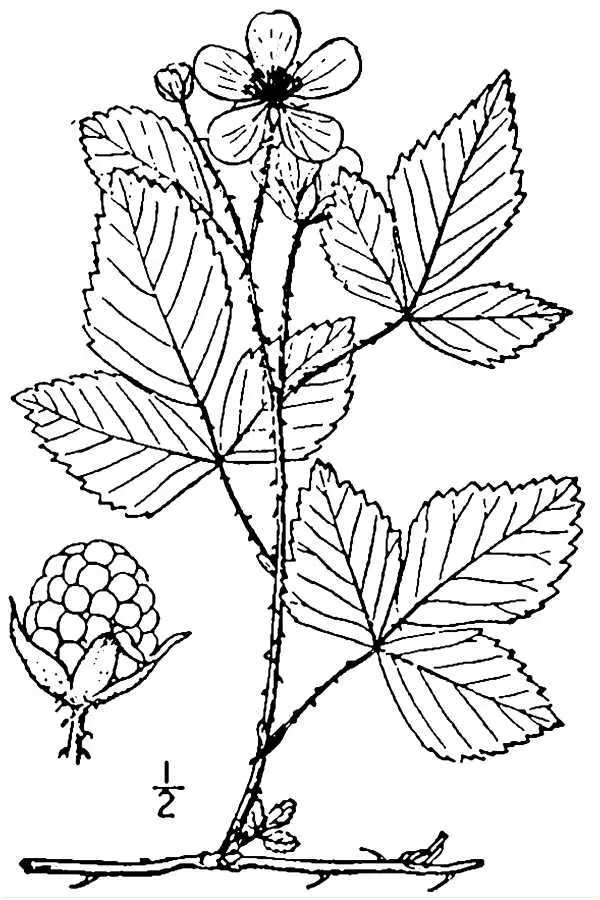
Upland Dewberry (Rubus invisus) drawing. (USDA-NRCS PLANTS Database / Britton, N.L., and A. Brown. 1913. An illustrated flora of the northern United States, Canada and the British Possessions. 3 vols. Charles Scribner's Sons, New York. Vol. 2: 281.)
Red Raspberry
Red Raspberry: (Raspberry). There are quite a few Raspberries, though the one I am most familiar with in the wild is the Rubus strigosus.
- USDA Plant Hardiness Zone: 3-8 (More information on hardiness zones).
- Soil pH: 5.0-7.5
- Plant Size: Up to 2 meters (6 feet) tall
- Duration: Perennial roots with Biennial canes (branches)
- Leaf Shape: Odd Pinnate with 3-7 leaflets. Each leaflet is more or less Ovate
- Leaf Phyllotaxis (Arrangement) on branch: Alternate
- Leaf Size: Compound leaf can reach 20 cm (8 inches) long
- Leaf Margin: Serrated (saw toothed edge)
- Leaf Notes: Young leaves have red with green color, fully green when leaf is mature
- Flowers: Five petalled white flowers on racemes
- Fruit: Though most commonly red in the wild, there are Blue, Black, Purple and even Golden or Yellow fruit hybrids with other varieties have escaped and naturalized in the wild.
- Bark: Woody canes with prickles, red in first year
- Habitat: Highly varied. Edges of woods, disturbed areas, power line openings, ditches, waste land, Boreal to Carolinian forest openings and edges.
Web Resources:
- Pictures on the web here (Google images) and here (Bing images).
- Interactive USDA distribution map and plant profile here.

Red Raspberry: (Raspberry) range. Distribution map courtesy of U. S. Department of Agriculture (USDA Natural Resources Service) and used in accordance with their policies.
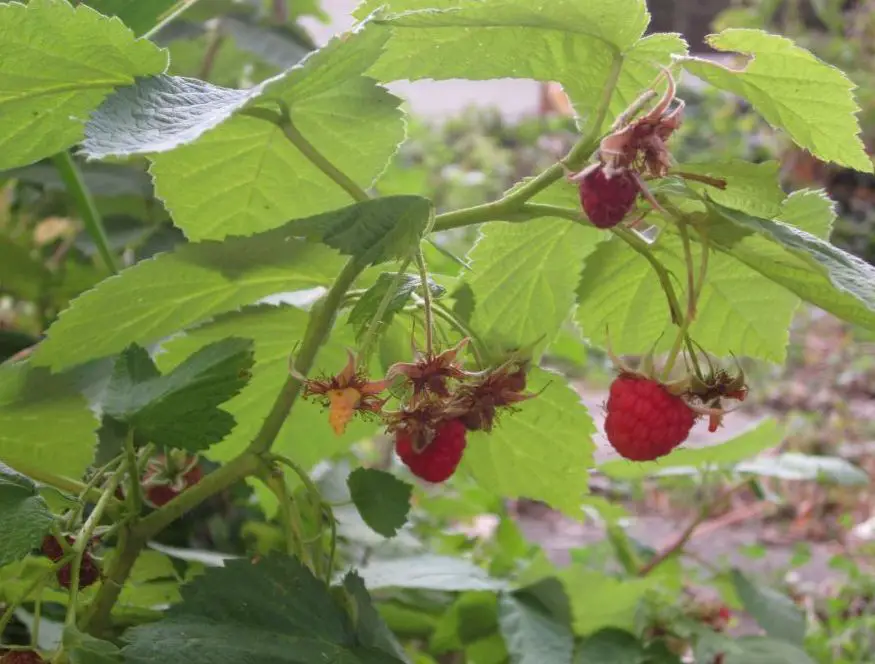
Wild Red Raspberries. Picture taken 3rd week of August. These Raspberries are growing well, and have done for years in conditions that break all the normal rules. The soil is clay, it is wet in the spring for a long time, and the pH is about 7.0. These appeared in the yard on their own, and I'm guessing they are a wild variant that has adapted to these local conditions - one of the advantages of transplanting plants that do well in your local area.
Wild Red Raspberries flower. (By: Walter Siegmund GNU Free Documentation License, Version 1.2)
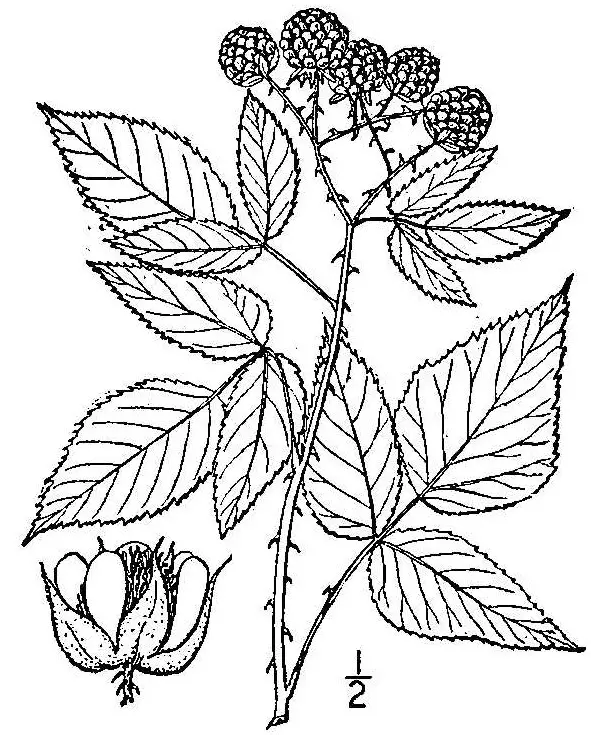
Red Raspberry - Rubus strigosus drawing. (USDA-NRCS PLANTS Database / Britton, N.L., and A. Brown. 1913. An illustrated flora of the northern United States, Canada and the British Possessions. 3 vols. Charles Scribner's Sons, New York. Vol. 2: 277.)
There are hundreds of species in the Rubus genus, and you may find berries that don't fit the three I've mentioned above. Do more research starting with this link: Rubus.
Search Wild Foods Home Garden & Nature's Restaurant Websites:
Share:
Why does this site have ads?
Originally the content in this site was a book that was sold through Amazon worldwide. However, I wanted the information to available to everyone free of charge, so I made this website. The ads on the site help cover the cost of maintaining the site and keeping it available.
Google + profile
